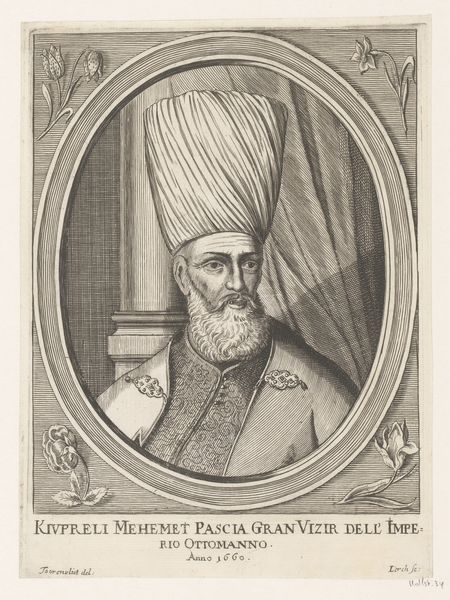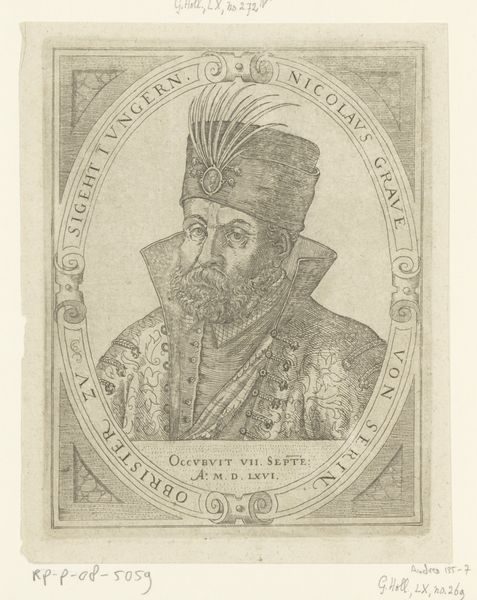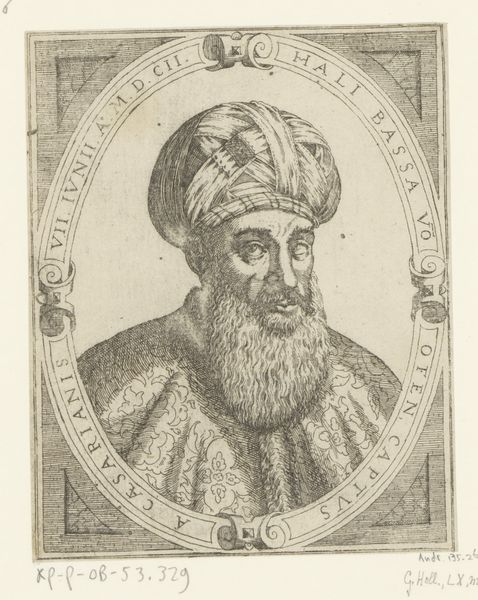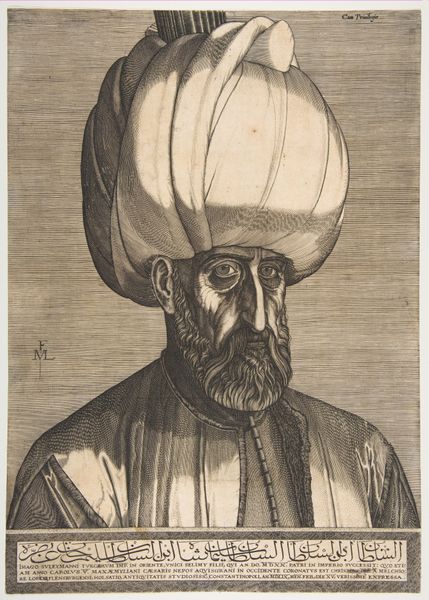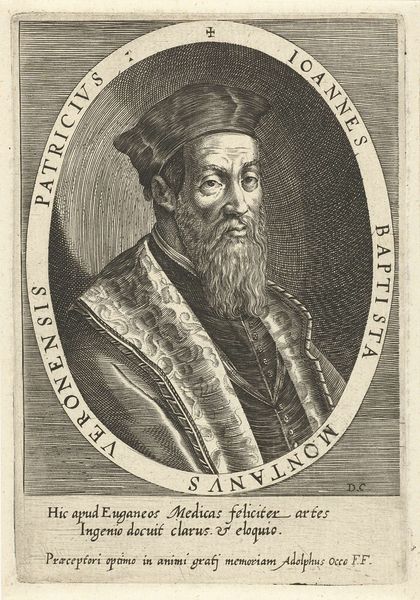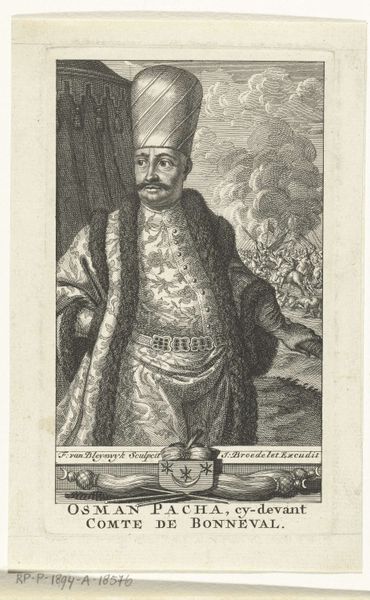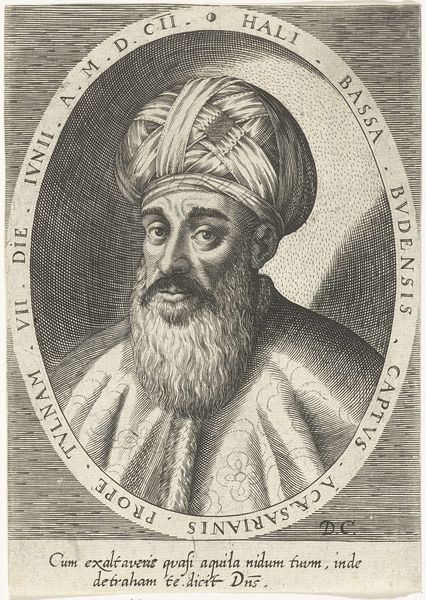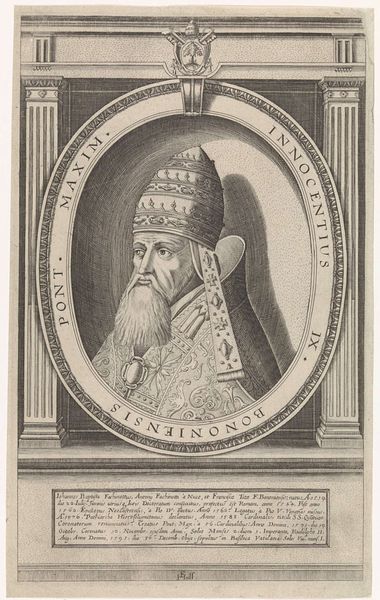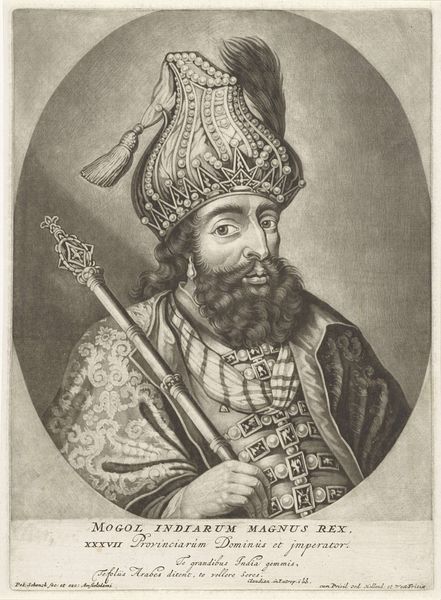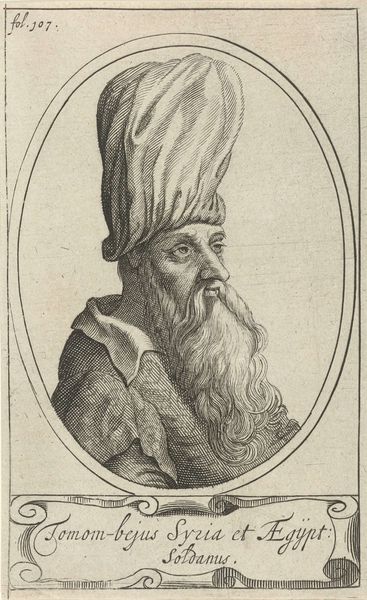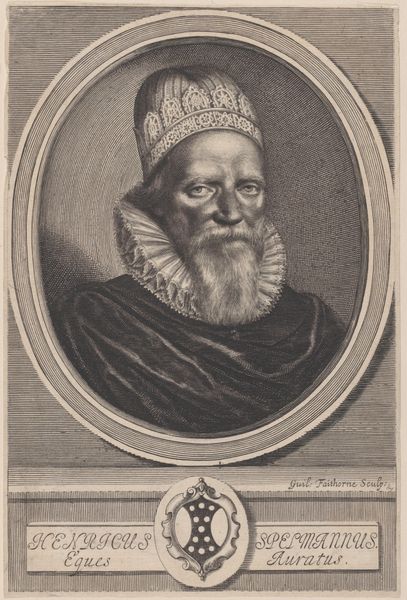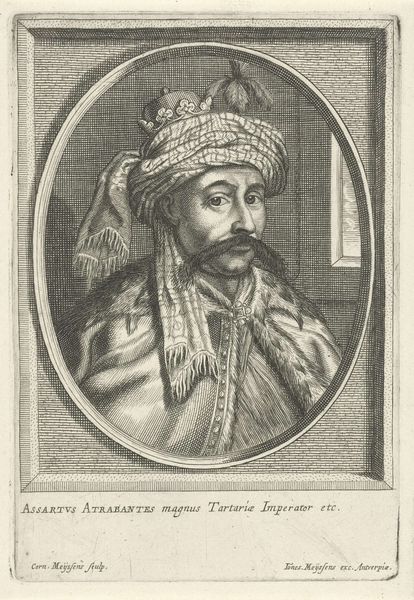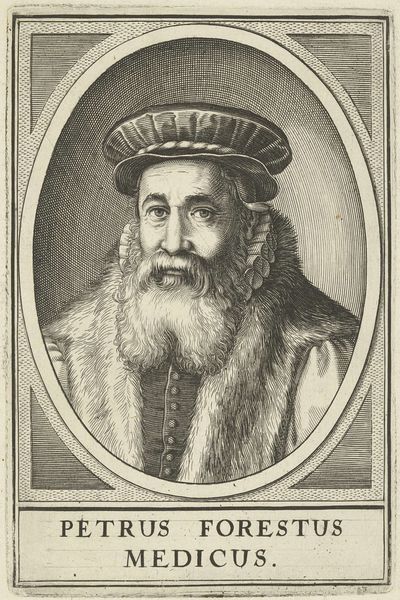
engraving
#
portrait
#
toned paper
#
baroque
#
old engraving style
#
pencil drawing
#
history-painting
#
engraving
Dimensions: height 220 mm, width 156 mm
Copyright: Rijks Museum: Open Domain
Editor: This is Giovanni Battista Bonacina's "Portret van Kior Assan Pascia," dating from between 1625 and 1669, an engraving currently held at the Rijksmuseum. I'm immediately struck by the subject's intense gaze, and the detailed rendering of his turban. How do you interpret this work? Curator: It’s fascinating how portraits like this operate as visual encapsulations of power and identity. Look at the turban; its size and meticulous rendering suggest authority and status. These details act as symbols understood by the viewer of the time. The gaze, as you noted, is important – does it seem confrontational or perhaps more measured? Editor: I see what you mean; it's less a direct challenge, more a composed assertion of presence. The framing of the oval also feels significant. Curator: Precisely! The oval frame acts as a symbolic boundary, containing and elevating the subject. Think of it almost as a halo, not in a religious sense here, but as an indicator of importance. How does the surrounding drapery impact your understanding of the subject? Editor: I hadn't really considered that. It adds a layer of richness, but also feels almost staged, reinforcing the sense of constructed authority that you mentioned. So it’s all contributing to this carefully managed image of power. Curator: Indeed. The artist uses culturally understood symbols – the turban, the frame, the gaze – to convey specific ideas about Kior Assan Pascia. The symbolic weight embedded in seemingly simple visual choices is immense. Editor: I'm beginning to see how much of the sitter’s identity is constructed through these artistic choices. It's a much more active process than I initially considered. Curator: Portraits like these really open up our understanding of how individuals wanted to be perceived and remembered in a very deliberate way. A true encoding of legacy.
Comments
No comments
Be the first to comment and join the conversation on the ultimate creative platform.
